Feline Oral Hygiene – 5 Step Plan is the fifth and final article in a series specially researched and written for Siamese Cat Breeder relating to dental care and oral hygiene for cats by Sheila Calloway RVN. Sheila is a qualified veterinary nurse and has over 30 years experience working with and keeping pets. Many of you will have seen Sheila at cat shows and she is usually found on the Siamese section with her cats.
How do I keep my cat’s teeth clean?
In a nutshell, attempting to clean your cat’s teeth is never going to be easy and ultimately depends on the cooperation and trust of your feline; notwithstanding a huge dose of patience for both parties, oh and a dash of bravery on your part! In some cases it will inevitably seem impossible and attempting to clean a cat’s teeth that is determined that you won’t, risks considerable distress for the anxious, defensive feline and some nasty scratches or even being bitten for you!
However don’t stop reading now! Hopefully you may have read some of my previous articles and gained some awareness of the oral hygiene problems and dental diseases that can occur – and predominantly it seems, with Siamese. So it is well worth making the effort to develop an Oral Hygiene Regime!
Only recently, despite all my best efforts, my Chocolate neuter boy Coco developed a nasty case of Gingivitis (reddening of the gum line), with a small abscess on a back molar, which although treated successfully left me even more aware of how prone our beloved Siamese are to this sort of problem. The young Spanish vet that treated him reiterated to me in her wonderful broken English “it eze a common problem with Siameze – you are very err brave to own one!”
I left the vets feeling slightly piqued but actually extremely proud to own my beautiful Siamese boy, however I was none-the-less very glad I had been vigilant enough to catch it early before something more sinister developed.
So what can we also doing to help reduce the risks?
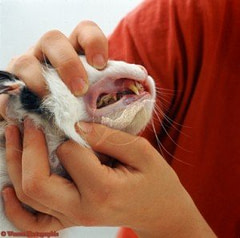
The Five Steps to a Healthy Feline Oral Hygiene Regime
1. Regular Checks of the mouth – If you do nothing else, ensure that you regularly check your cat’s mouth to detect early signs of problems – reddening of the gums is usually an early warning sign. At least weekly would be ideal – however as frequently as you can is better than not at all. Its easy to take a quick look whilst your cat has come for a cuddle on your knee. The younger the kitten when you start to examine their mouth, the better.
Further reading: Please refer to Oral Hygiene in Cats, Article 1: Mouth Examinations
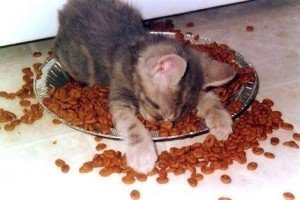 2. Food – Without a doubt, avoiding a diet wholly consisting of soft foods is the best approach – and from a very early age.
2. Food – Without a doubt, avoiding a diet wholly consisting of soft foods is the best approach – and from a very early age.
Ideally dry kibble foods are best for reducing risk of tartar build up and associated dental problems and diseases. Most vets and breeders recommend them and there is a huge range of them available now on the market. There are babycat, kitten and adult varieties as well as breed specific, diet specific (e.g., sensitive tummies) and some are even oral specific.
The specific diets for cats to prevent dental disease include Hill’s Prescription Feline t/d, Hill’s Science Diet Oral Care, Friskies Dental Diet, Royal Canin Dental DD 27, and Purina Veterinary Diet DH (for Dental Health) Feline. However, if your cat suffers from other health problems, you may need to feed a specific diet in which dental health is not the primary consideration, a dry version of such a diet would be preferable to a soft one.
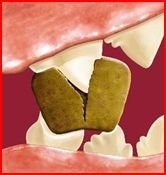
If your cat is fussy, try mixing some dry kibble in with the soft food, gradually reducing the ratio of soft food to the kibble until hopefully your feline obliges and continues to tuck into the dry food with gusto.
‘Tried that!’ I hear you cry ‘….and it didn’t work!’ you announce. ‘My cat just picked out the kibble!’ you state proudly. Don’t give up I say!
Some kibble in your cat’s diet is better than none at all and if you persevere, in time your cat should soon accept that this is part of the menu, even if you have to keep mixing it. Remember who is supposed to be the boss…..!
You could also try a few sneaky tactics – you don’t have to serve dry kibble in a dish at meal times. In fact, my cats like to raid the dog’s dishes, or pick up odd pieces that have dropped on the floor.
Varying the feeding locations for a while can help too, a different part of the floor, on a bench, etc.., or just serving the kibble directly onto a mat on the floor or on a different plate or type of dish and so on
There are a lot of products and toys on the market designed specifically for either treats or kibble to keep you cat entertained, curious and occupied.
Or, an old egg box can be just as much fun!
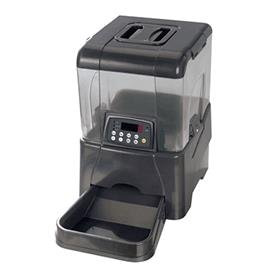
Do not give your cat objects to chew that are harder than her teeth. CET produce Oral Hygiene Chews that are safe for cats. There are special catnip chews and feline Greenies (dental treats) that may help your cat keep their teeth clean. Feline: Breath and Dental Care Treats, may also help with dental hygiene.
I haven’t yet tried any of these. Please let me know if anyone has and what they think of them?
However, this is not enough in itself to ensure dental problems do not arise and a general oral hygiene routine is still essential.
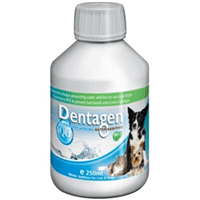
I use Dentagen Plaque Preventitive made by Genitrix, which is suitable for both dogs and cats. I add half a capful to 500ml of fresh water on a daily basis and keep it in the fridge. I refresh the bowls twice daily with the Dentagen water and change the bowls every second day.
I buy a 250ml bottle which kept in the fridge lasts me approximately 2 months.
Dentagen also make toothpaste for pets.
The additives usually contain something to prevent the build-up of plaque as well as helping to keep the mouth fresh and the gums and teeth clean – thus reducing the risk of inflammation and/or infection
Again on its own, this is not enough and should be part of a more general oral hygiene routine.
4. Cleaning teeth – Well we are now really getting our teeth into the nitty gritty of oral hygiene in cats and usually the most off-putting and difficult for most owners as it is fraught with all sorts of challenges. Cats may resist having their teeth brushed. However, a step-by-step approach often will lead to acceptance.
Dental care should start as soon as possible, as it’s easier to train young kittens to accept toothbrushes than more senior pets. However, it is never too late, so don’t be daunted even if your feline is middle-aged!
Give your cat or kitten a toothbrush as a toy as soon as possible – but don’t attempt to use it to clean their teeth yet. There are a couple of preliminary stages first, however hopefully the toothbrush will still be doing its stuff as its playfully chewed in the meantime.
Begin by making your cat comfortable and relaxed, perhaps on your knee and gently stroking, also rub the cats muzzle over the teeth. This is usually easily accepted, as it mimics natural behaviour .
Once content with having the muzzle stroked, you can try beginning with a small piece of cloth folded over a finger, or a special ‘finger brush’, even using a cotton bud for young kittens or a nervous older cat can help. Approach from the side rather than the front.
If this is working well, start adding a small amount of toothpaste so your kitten becomes familiar with its taste.
Do not attempt to use human toothpaste! It will utterly revolt your cat and they won’t forget or forgive the experience. If you do survive the escapade reasonably unscathed, it is probable your cat will not ever risk repeating the experience and will refuse for you or anyone else, including vets and judges, to go anywhere near their mouth again! You have been warned!
There are now plenty of pet toothpastes on the market that do not foam and tastes nice. Cat toothpastes are available that use baking soda as the base. Others use oxygenating substances to limit the growth of anaerobic bacteria. Genetrix (Dentagen), Virbac, Petrodex, Drs. Foster & Smith, and CET have lines of pet toothpastes. Many of these products now come in flavors that are attractive to cats, such as tuna and poultry.
Once you are happy that your feline is also happy with this routine, it is time to try and progress onto using the toothbrush. You can do this initially without using toothpaste if you prefer, albeit it might help if the cat is already familiar with the taste.
Make sure you press the toothbrush well into the paste so the bristles are well coated, otherwise it will just get licked off!
Start with a few teeth, usually the outer edge of the side of the mouth, these are the easiest to do and usually require the most care and attention. The inside edges of teeth and gums are kept cleaner by licking from the tongue and biting on kibble or play toys etc…
Only do this for a few seconds and stop immediately if your cat begins to object. Don’t keep going until your cat complains you can always increase the duration in time and there is no rush.
If your cat immediately objects, be patient and try again either the next day or the day after, but don’t give up – well not yet anyway unless your cat is clearly very distressed by the experience!

If all of this goes well, try and open your pet’s mouth. You can do this by gently holding the head back as far as possible with one hand, whilst brushing the other surfaces of the teeth.
Remember, if this is difficult it is better to carry on brushing the outer surface of the teeth rather than give up, as the tongue and saliva clean the inner tooth surfaces to some extent.
At the end of brushing, make sure you give lots of praise and cuddles, a treat or reward such as a game so that your cat feels it’s all been worthwhile.
Hopefully after about 4 – 6 weeks. Your cat has begun to accept cleaning teeth is part of normal life.
Personally I don’t include teeth cleaning as part of a regular grooming session. I prefer to do different things on different days so my cats don’t get fed up with the process or with me. I clip nails and brush coats on separate occasions.
5. Regular Veterinary Check Ups – Your vet will usually undertake a general health check on your feline whatever the purpose for your visit. This usually includes a quick check of the mouth, however you should take the opportunity to point out any concerns you might have and/or ask the vet to confirm that everything regarding teeth and gums are OK.
This will prompt your vet to take a closer look and examination of the teeth and gums. Early interventions can be vital and save your cat a lot of discomfort and misery and you some of your hard earned cash.
Do not feel disheartened about your oral health regime if your vet finds a problem – it doesn’t mean to say it’s your fault. Some cats, especially Siamese are prone to dental problems and diseases that will arise despite all our best efforts.
You can be assured however that without your care the problem would have occurred a lot sooner and be much worse.
In the event of a dental problem arising the vet may prescribe antibiotics and/or steroids, or recommend an x-ray to understand the extent of the problem or suggest a full de-scale and clean under anesthetic. This is when any particularly diseased teeth will be extracted and/or abscesses drained and thoroughly cleaned out.
It is imperative that if in any doubt about the healthy condition of your cats teeth or gums, or if you detect an early signs of Gingivitis that you seek veterinary advice and support as soon as possible.
A Quick Re-Cap
Five simple steps to a good oral hygiene regime are:
- Regular checks of the mouth by you
- Food – feeding dry kibble
- Water additives to reduce plaque and keep the mouth fresh
- Cleaning teeth – whether with a cotton bud or tooth brush it will help & remember playing with a toothbrush can also be just effective
- Regular Veterinary check ups
Don’t Give Up!
If your cat absolutely refuses to let you clean its teeth & gums and you are both becoming anxious or distressed, do not continue. Your feline needs to feel loved and safe and not threatened by you. Being happy and content is just as important as having a sparkling smile!
Even just one or more of the above 5 steps is still better than none at all – although the more you can manage to combine, the better.
Further information and support
The Veterinary Oral Health Council (VOHC) Seal of Acceptance is awarded to products that meet or exceed the VOHC standard for retarding accumulation of dental plaque or tartar. A complete listing of products that have been granted the VOHC Seal of Acceptance is available at www.VOHC.org – click the Products Awarded the VOHC Seal link. The VOHC web site also features additional information about dental disease in pets, and there are other pages on this AVDC web site that may be helpful
Finally
I hope you have enjoyed reading this series of articles on Oral Hygiene In Cats and that you have found some of the information helpful.
Thank you to Ross Davies of Burnthwaites Siamese and Editor of our favorite Siamese Website, Siamese Cat Breeder for all his support, assistance and encouragement to produce these articles from a somewhat amateur author and of course to all you Meezies for taking the time to read them!
My very warmest good wishes to you all.
Something to help us all to keep smiling about……!

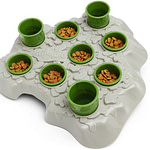


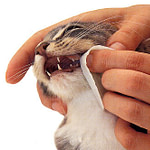
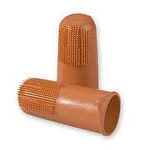
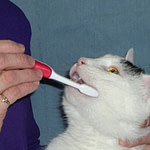
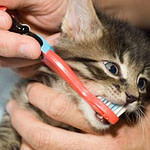



Great article Sheila, some informative information especially Siamese owners. Thankfully we follow the 4 out if 5 steps but the teeth brushing has us beat!!
Such a relief to find this article! My darling Siamese boy (adopted 10 years ago through Dee Carrick) has had gingivitis and a full dental descale under anaesthetic (they never realise that the anixiety of this procedure means that they ought to give me an anaesthetic too…) and I was desperate to know how to care for his teeth. I’d already found the dental care hard food, but I am delighted to find out about the water additive! Teeth brushing is out, I’m afraid, and I am working on getting him to let me check his teeth, with some success. Just wanted to say a HUGE thank you! I didn’t know it was such a common problem among Siamese.